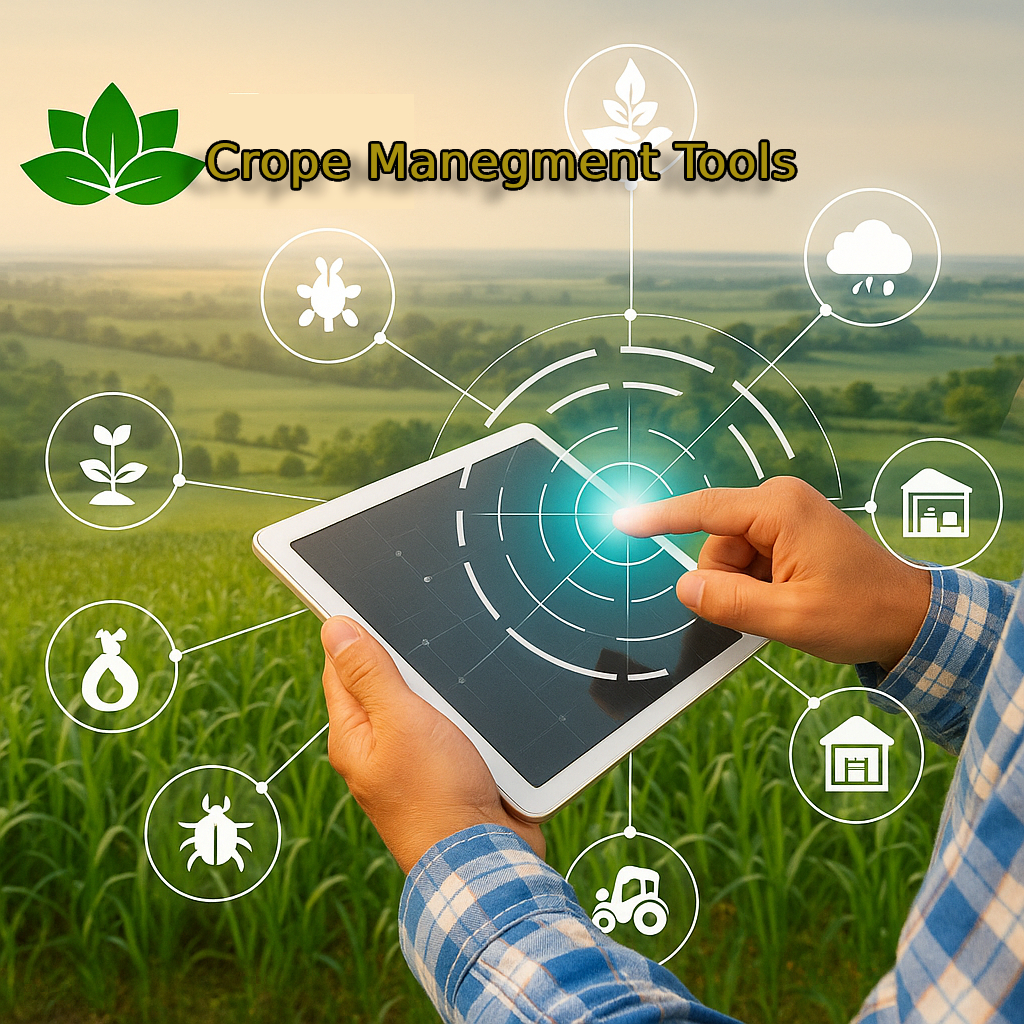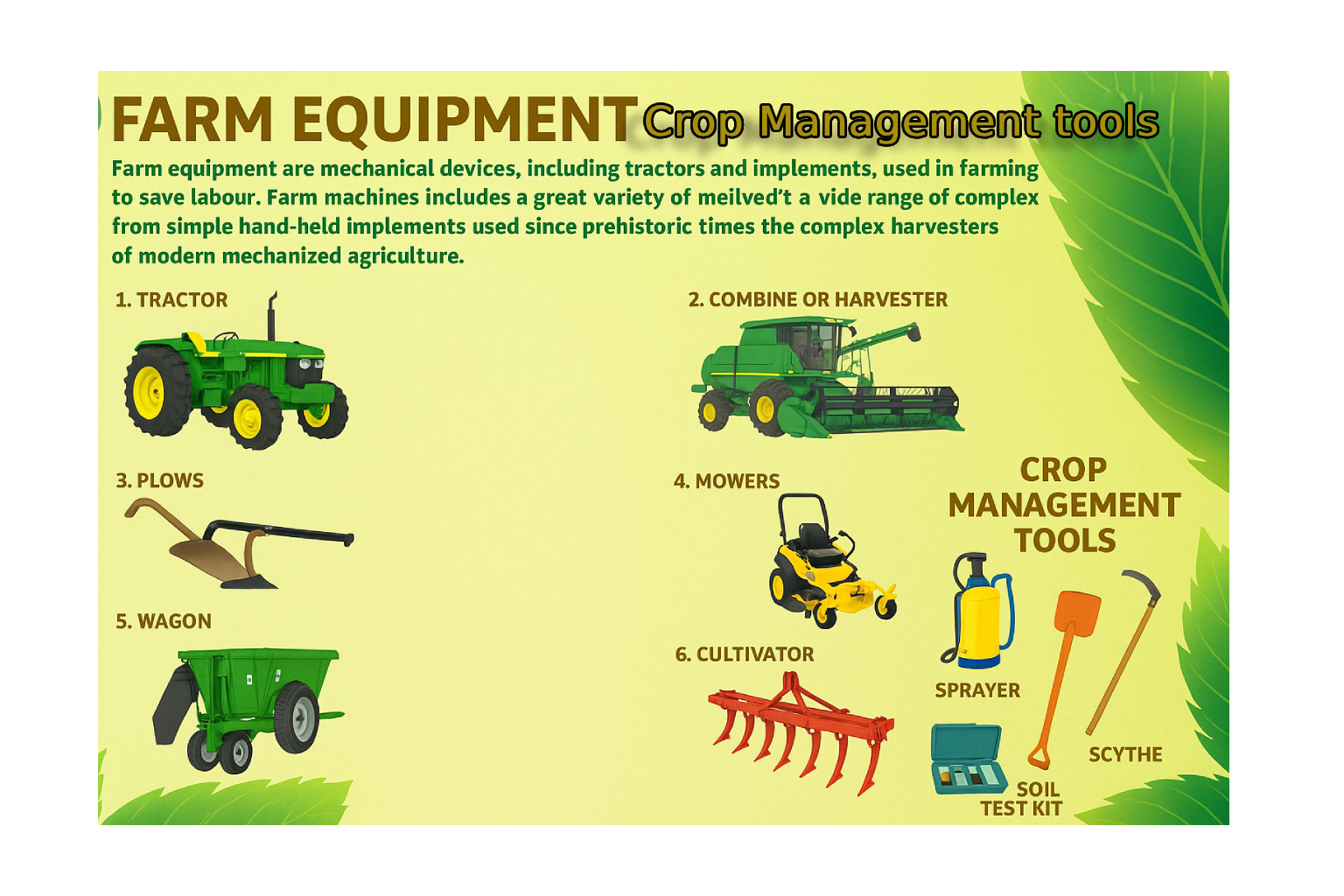Discover the top 10 crop management tools revolutionizing modern agriculture in 2025. Learn how smart technologies like IoT, AI, drones, and sensors help farmers optimize crop yields, reduce costs, and promote sustainable farming.
In an era marked by rapid technological advancement and increasing demand for food, efficient and sustainable agriculture has become more critical than ever. At the core of achieving these goals is effective crop management—a process that ensures optimal crop growth, health, and yield. One of the most impactful developments in this domain is the rise of crop management tools, which integrate data, automation, and real-time monitoring to support farmers in making smarter decisions.
These tools have evolved from simple spreadsheets and calendars into comprehensive digital platforms equipped with IoT sensors, drones, satellite imaging, AI-driven analytics, and mobile applications. Crop management tools are reshaping traditional farming practices by offering precise and actionable insights, reducing waste, and improving productivity.
Table of Contents
What are Crop Management Tools?
Crop management tools refer to digital or mechanical solutions that assist farmers in managing the entire lifecycle of a crop—from planting to harvesting—more efficiently and effectively. These tools collect, analyze, and interpret agricultural data to optimize farming decisions.
They provide vital support in areas like:
- Soil health monitoring
- Weather prediction
- Pest and disease control
- Irrigation scheduling
- Nutrient management
- Harvest planning
By integrating technology with agriculture, crop management tools enable precision farming, reducing input costs and enhancing output quality.
Key Features of Modern Crop Management Tools
Modern crop management platforms are feature-rich and usually accessible via mobile or desktop applications. The most common functionalities include:
- Field Mapping
- GPS-based maps for visualizing crop distribution
- Helps segment fields for differential treatment
- Crop Planning
- Recommendations for optimal planting time, crop rotation schedules, and seed selection
- Integrates local weather and soil data
- Soil Monitoring
- Uses sensors to track pH, moisture, temperature, and nutrient levels
- Alerts for anomalies or deficiencies
- Pest and Disease Prediction
- AI-based image recognition and pattern analysis
- Early detection and treatment suggestions
- Irrigation Management
- Smart irrigation systems based on real-time moisture and weather data
- Prevents over- or under-watering
- Fertilization Schedules
- Customized nutrient plans based on crop needs and soil conditions
- Reduces fertilizer waste
- Yield Forecasting
- Uses historical data and real-time inputs to predict harvest outcomes
- Helps with market planning and inventory control
- Compliance and Documentation
- Maintains digital records for certifications and audits
- Helps with traceability and legal compliance

Types of Crop Management Tools
Crop management solutions can be categorized based on their functionality and technology:
1. Sensor-Based Tools
These include soil sensors, temperature probes, weather stations, and humidity meters. They are placed in the field to provide real-time data about environmental conditions affecting crops.
Examples:
- Arable Mark
- Sentek Drill & Drop
- Teralytic Smart Soil Probes
2. Aerial and Satellite Imagery Tools
Drones and satellites capture high-resolution images to monitor crop health, detect stress areas, and analyze plant growth stages.
Examples:
- DroneDeploy
- Planet Labs
- DJI Phantom Series
3. Farm Management Software (FMS)
These are integrated platforms that centralize data collection, planning, monitoring, and analysis.
Examples:
- Cropio
- Climate FieldView
- Ag Leader AgFiniti
- John Deere Operations Center
4. Mobile Applications
Designed for small and medium-sized farmers, these apps provide accessible crop management tools via smartphones.
Examples:
- Plantix
- AgroStar
- Krishify
- FarmLogs
5. IoT-Integrated Tools
These tools use the Internet of Things (IoT) to interconnect devices and sensors, enabling automated and remote monitoring.
Examples:
- Netafim (smart irrigation)
- Semios (pest control and weather)
- CropX (soil intelligence)
Benefits of Crop Management Tools
✅ 1. Improved Efficiency and Productivity
Tools streamline field operations, reduce manual labor, and ensure that every input is used effectively. This results in higher crop yields and better quality produce.
✅ 2. Cost Optimization
By enabling precision agriculture, these tools help cut down on unnecessary expenses for water, fertilizers, pesticides, and energy.
✅ 3. Real-Time Decision Making
Access to up-to-date data empowers farmers to respond quickly to issues such as pests, diseases, or weather threats.
✅ 4. Environmental Sustainability
Efficient resource usage and reduced chemical runoff contribute to eco-friendly farming practices.
✅ 5. Risk Mitigation
Predictive analytics helps in managing risks related to climate, pests, and market fluctuations.
✅ 6. Traceability and Compliance
Automated record-keeping ensures that farmers meet regulatory standards and traceability requirements, which are critical in global supply chains.
Use Cases of Crop Management Tools Around the World
📍 United States: Corn and Soybean Farms
Large-scale farmers in the Midwest use tools like Climate FieldView to collect data from tractors, combines, and sensors, allowing real-time decision-making for planting and fertilization. This has improved yield by over 20% on some farms.
📍 India: Rice and Wheat Fields
Smallholder farmers in Punjab and Haryana are using apps like Plantix and Kisan Suvidha to identify plant diseases via smartphone photos and get instant treatment suggestions.
📍 Netherlands: Greenhouse Crop Management
Dutch farmers use sensors and AI to control temperature, light, and CO₂ in greenhouses, leading to 95% water use efficiency and higher productivity with minimal environmental impact.
📍 Brazil: Coffee Plantations
IoT devices and drone imaging are used to assess plant health and predict yield. These tools help in deciding the right time for pruning and harvesting, ensuring better quality beans.
Challenges in Adopting Crop Management Tools
Despite their benefits, crop management tools come with some challenges:
🚧 1. High Initial Costs
The hardware and software investments can be substantial, especially for small-scale farmers.
🚧 2. Connectivity Issues
Rural areas often lack the infrastructure required for real-time data transmission and cloud storage.
🚧 3. Digital Literacy
Farmers may need training to use advanced tech tools effectively.
🚧 4. Data Privacy
Concerns over who owns and accesses farm data remain a hurdle in full-scale adoption.
🚧 5. Integration
Bringing together multiple tools from different vendors can lead to compatibility issues and data silos.
Future of Crop Management Tools
The future of crop management is bright, with several emerging technologies set to redefine agriculture:
🔮 AI and Machine Learning
These technologies will analyze complex datasets to provide even more accurate predictions and recommendations.
🌐 Blockchain
Will offer secure, transparent tracking of agricultural inputs and outputs for supply chain transparency.
📡 5G and Edge Computing
Will allow faster data transfer and real-time automation even in remote fields.
🧠 Digital Twins
Creating virtual replicas of farms to simulate crop outcomes under different scenarios for better planning.
🛰️ More Affordable Satellites and Drones
Will make high-resolution imaging accessible to even smallholder farmers, leveling the playing field.
Conclusion
Crop management tools are more than just digital gadgets—they are game-changers in the field of agriculture. From enhancing productivity and sustainability to reducing risks and improving profitability, these tools empower farmers with the information and technology needed to thrive in the modern agricultural landscape.
As these tools become more affordable, user-friendly, and widespread, they hold the promise of revolutionizing global food production. With supportive policies, adequate training, and infrastructure development, digital crop management can be the cornerstone of future farming—smart, efficient, and sustainable.
